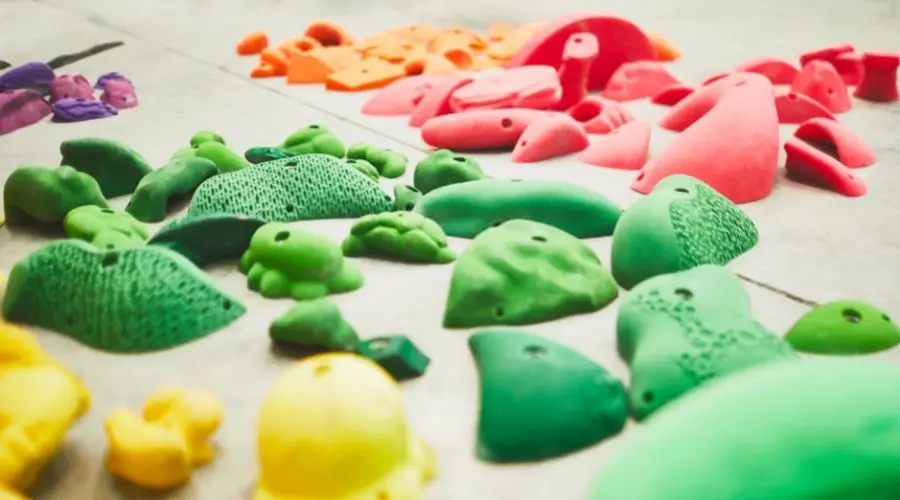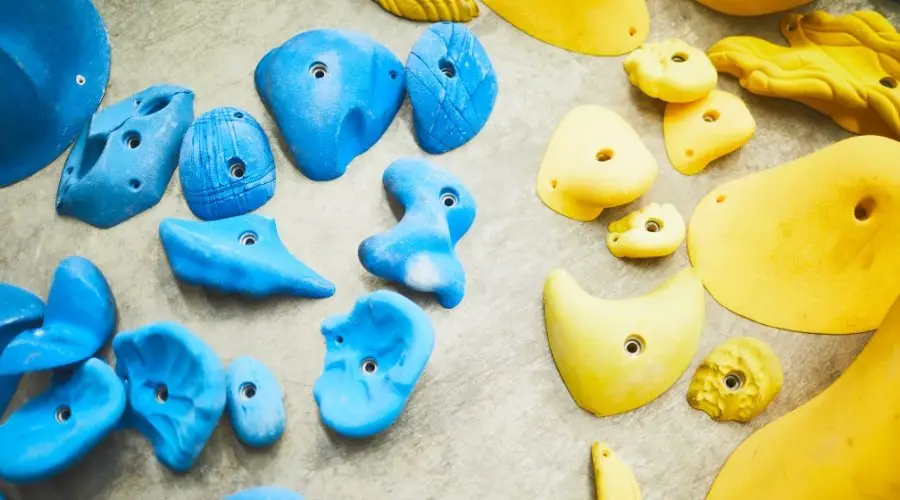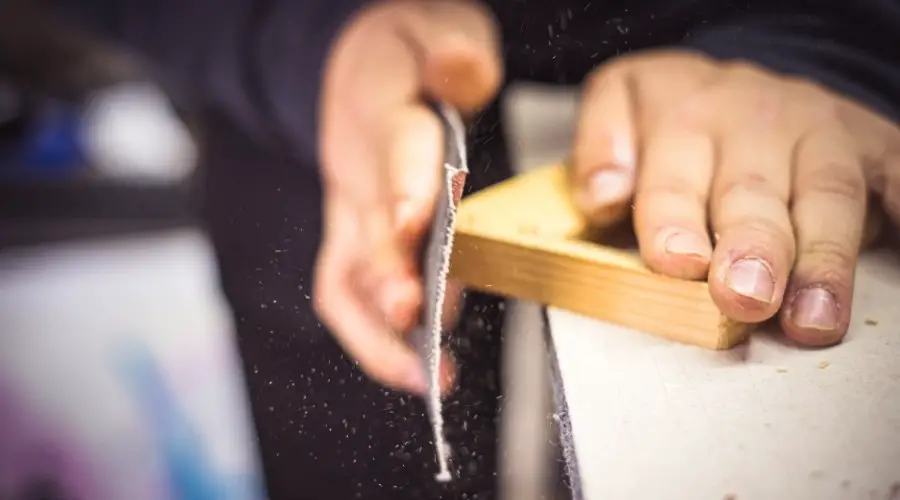I never really thought about how much rock climbing holds cost until my friend started telling me about how he wanted to build a home climbing wall. He was in the beginning stages and attempting to throw together a rough cost estimate for the wall. This peaked my interest and I spent a few hours researching how much rock climbing hold kits cost. Here is what I found out:
On average, a typical rock climbing hold kit will cost between $1.30 and $10.14 per hold. The climbing hold quantity, size, shape, material, and texture are all factors that affect the price. High quality super-sized climbing holds with unique shapes can cost upwards of $100 per hold.
While most climbers will not spend $100 per hold, it is important to understand the different price points of climbing holds when building a home wall. Picking the right holds will make or break your wall so I urge you to put some thought into it. Read on to find out why some holds cost more than others and figure out what factors will be most important for you to consider.
15 Popular Climbing Hold Sets with Price

When conducting my research, I compiled a table of 15 popular climbing hold kits and sorted it by price per hold.
| Climbing Hold Kit | Total Price | Price Per Hold |
| Rocky Mountain Screw On Holds – 50 Holds | $65 | $1.30 |
| Rocky Mountain Bolt On Holds – 50 Holds | $70 | $1.40 |
| Metolius Mega Pack – 50 Holds | $200 | $4.00 |
| Metolius Mega Pack – 30 Holds | $120 | $4.00 |
| eGrips Home Gym Kit – 100 Holds | $550 | $5.50 |
| eGrips Drop Art Starter Kit – 50 Holds | $300 | $6.00 |
| Rocky Mountain Roof Jugs – 5 Holds | $30 | $6.00 |
| Atomik Classic Bolt-on Pack – 100 Holds | $608 | $6.08 |
| Metolius Wood Grips – 25 Holds | $200 | $8.00 |
| Atomik Rock Like Pack – 35 Holds | $280 | $8.00 |
| So iLL Starter Kit – 50 Holds | $400 | $8.00 |
| So iLL Positives Kit – 74 Holds | $750 | $10.14 |
| Atomik Large Limestone Jugs – 5 Holds | $55 | $11.00 |
| eGrips SoCo Pocket Jugs – 5 Holds | $166 | $33.20 |
| So iLL Features Kit – 7 Holds | $700 | $100.00 |
As seen in the table above, there is a wide variety of price points for climbing holds. Cheaper holds can cost under $4 while more expensive holds can be upwards of $100. If the price per hold is too expensive, you can consider making your own climbing holds.
As a general rule, it is less expensive to make your own climbing holds than it is to buy them. However, making climbing holds is a time consuming process and requires the proper equipment and skills. Desired hold material, shape, and size will all affect how much it will cost and how long it will take to make climbing holds.
If you are more interested in making your own holds than buying them, I recommend skipping to the last section of the article. But if you are more curious about what factors affect climbing hold price and what to look for, don’t skip anywhere!

Factors That Increase The Price of Climbing Holds
The main factors that affect how much climbing hold kits cost are the hold quantity, size, shape, material and texture.
Hold Quantity
Just like with every other product in life, money can be saved by buying climbing holds in bulk. On average, climbing hold kits with more holds will have a lower price per hold. This is detailed in the table above (kits with more holds typically show up near the top of the table indicating they are more cost effective).
Although the price per hold will generally decrease, the total price obviously will not. I am a big fan of buying in bulk, but only if I know the product is good. If you buy a whole bunch of something but hate it, then you just have a whole bunch of crap. This is where all the other climbing hold factors that affect price come in.
Hold Size
Typically the larger the hold, the more expensive it will be. This is due to the increased material use in the hold. Just because the hold is bigger than another, does not mean the hold will be better quality.
Assuming all other factors stay the same (shape, material, texture, etc.), larger holds will be easier for climbers to grip. This will be beneficial for climbers with less experience who are not yet capable of climbing very hard grades. You have to be careful with this though because some larger holds can be designed differently and will be harder to grip i.e. large slopers vs mini jugs.

Hold Shape
The shape of climbing holds also play a direct impact on the cost of hold. Holds with a more complex shape (like a human head as seen in the So iLL Features Kit linked here) will be much harder to make than a standard sloper or crimp.
Increasing shape complexity is basically guaranteed to drive up the price; however, it also guaranteed to make your climbing routes more interesting and give you more options for setting.
Hold Material
It should come as no surprise that some materials are much more expensive than others. The material’s base price, ability to mass produce holds, and ease of shaping it will all affect how much a climbing hold costs. For example, taking the time to sculpt a large complex hold out of real rock will make the hold much more expensive than the same hold made out of the standard polyurethane material.
Hold Texture
In general, the more textured the hold the more expensive it will be. Textured holds are more complex than non-textured holds and thus are more complicated to make. This added complexity drastically increased the difficulty and time in the hold making process. It is not for nothing however as textured holds can be much more interesting and fun to climb than non-textured holds.

Making Your Own Climbing Holds
If you are looking to save money, you might consider making your own climbing holds. Wood is the most common material to use for making your own holds. While other materials can be used such as polyurethane, wood is typically the cheapest and easiest to work with.
Making your own holds may not be cheaper for everyone looking to do so. If you do not have access to basic woodworking tools then this is definitely not the route to go. The tools you have at your disposal will also affect how quickly and effectively you are able to make the holds.
If you are someone who is always looking for the most time efficient way of doing things, making you own holds may not be the best route to go. The process is typically very time consuming and can not be “whipped out” without the quality of your holds suffering.
If you haven’t been scared away yet, I recommend checking out this youtube video that shows you the process of making wooden holds linked here: How To Make Your Own Wooden Climbing Holds – Tobias Wurft
The Bottom Line
A good climbing hold starter kit will run you between $4 and $8 per hold on average. If you are looking for higher-end holds or are trying to get specially crafted holds, expect to pay more than $8 per hold. While making you own holds can save you money and be a rewarding experience, it is also a very time consuming process. I do not recommend getting too cheap with your climbing holds because they are such an integral part to your home climbing experience.
